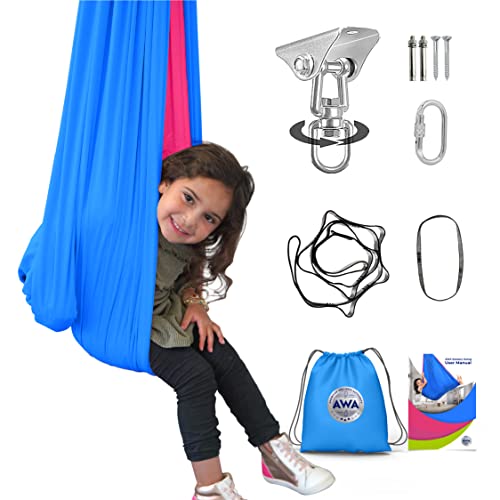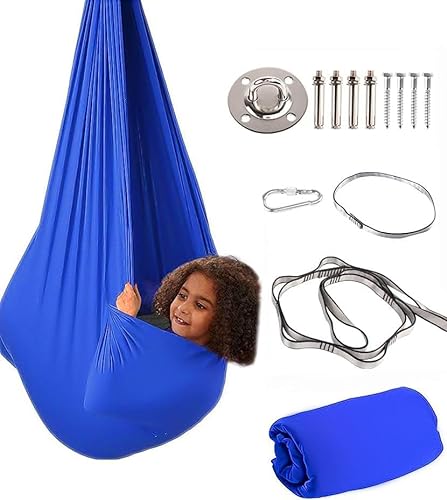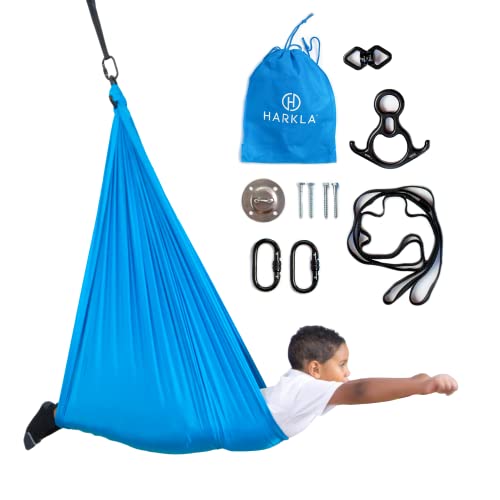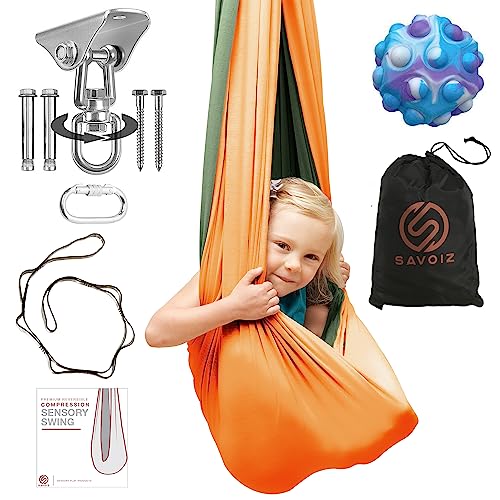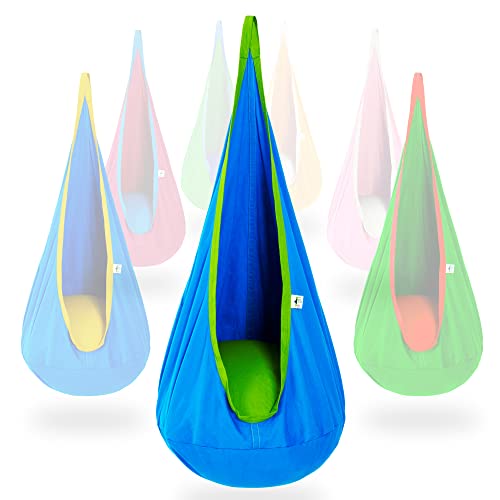The Best Sensory Swings: Ultimate Comfort Picks
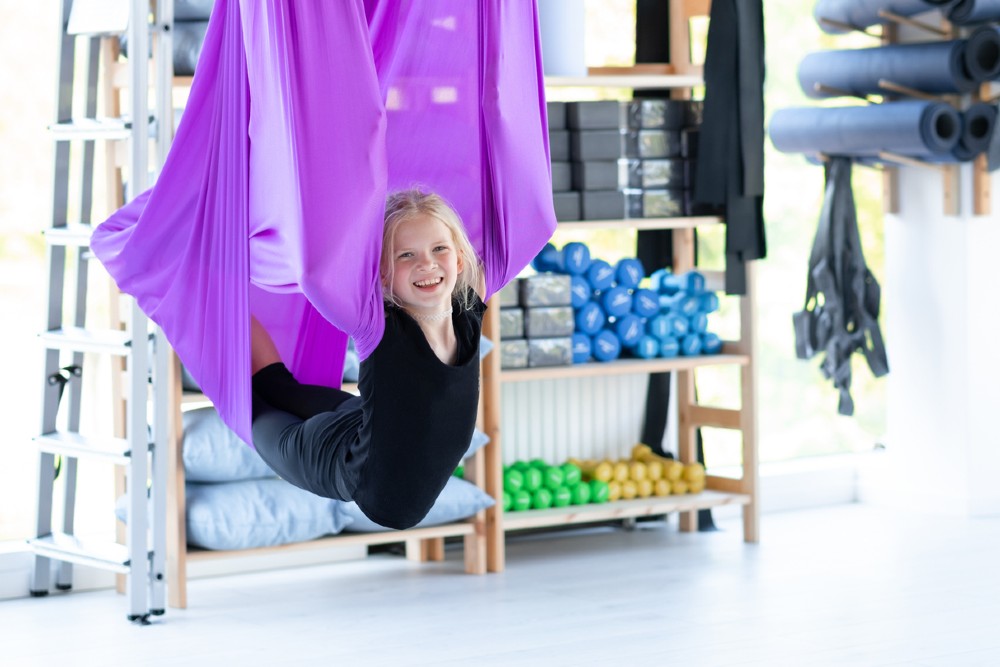
Sensory swings are designed to provide a calming and therapeutic experience for children with sensory processing issues. They offer a gentle, rhythmic motion that helps soothe and regulate the sensory system, promoting relaxation and focus. Constructed from soft, stretchy materials, they provide a cozy and secure environment, encouraging a sense of safety and comfort.
Let's step into the world of the best sensory swings of 2024. They stand out from the crowd because of the way they adapt to a variety of consumer preferences and needs, featuring robust materials, versatile installation, and a variety of designs. Our top pick comes from American Wellness Authority, boasting a sturdy, yet comfortable build.
Our Top Picks
- AWA Sensory Swing: Best Overall (shop now)Read more about this swing ↓
- Aokitec Sensory Swing: Most Comfortable (shop now)Read more about this swing ↓
- Harkla Sensory Swing: Best Quality (shop now)Read more about this swing ↓
- Savoiz Sensory Swing: Most Exceptional (shop now)Read more about this swing ↓
- Outree Sensory Swing: Most Durable (shop now)Read more about this swing ↓
The Best Sensory Swings
AWA Sensory Swing
Best OverallExperience the ultimate blend of comfort and durability with the AWA sensory swing. Meticulously crafted to provide a secure and enjoyable retreat, this swing is ideal both for kids and adults alike. With the ability to support up to 220 pounds, it serves as a perfect relaxation spot both inside and outdoors. Plus, its machine-washable feature makes for a hassle-free clean-up process.
As the perfect stress reliever no matter the situation, this sensory swing will wrap you up in its soft and stretchy fabric. By holding you in a gentle embrace, it offers a serene hideaway for those who live with anxiety, ADHD, or Autism. It promotes better focus and coordination while using it and after use. This product also offers a hassle-free installation process. The portability of this swing is second to none and its comfort levels are undeniable, making it our top choice.
- Intentional space-saving design
- Comes with a sturdy build
- Comfortable to use
- Color might differ from images
Aokitec Sensory Swing
Most ComfortableCrafted with care, the Aokitec kids sensory swing for special needs creates a serene retreat for children. It offers a comforting embrace that encourages relaxation and sensory balance. Its plush, soft, and silky nylon fabric invites youngsters to cocoon themselves to their heart’s content. This provides a secure and gentle hug-like effect that soothes and calms kids.
Perfect for those with sensory processing challenges or autism, this therapy swing enhances body awareness, balance, and motor skills. Simultaneously, it offers a delightful space for kids to bounce, swing, spin, and unwind. Installation is a breeze thanks to the hardware kit that comes with the swing as well. That way, you can set up the sensory swing and allow your little ones to enjoy their new haven of tranquility in no time. Beyond its therapeutic benefits, this swing is also incredibly durable.
- Sturdy and durable construction
- Comfortable to swing in
- Easy installation process
- Fabric might snag easily
Harkla Sensory Swing
Best QualityEscape to a world of tranquility and therapeutic comfort with the Harkla indoor sensory swing. It’s a haven for kids who are seeking a serene retreat from the hustle and bustle of everyday life. This sensory swing not only eases meltdowns but it also serves as a cozy nook. It promotes emotional regulation through its gentle and swiveling motion paired with the snug and compressive embrace. Ideal for children craving sensory input, it offers a calming effect akin to a warm hug.
By fostering a sense of security and well-being, this sensory swing yields a plethora of benefits. Crafted from a soft yet durable nylon, it can stand the test of playtime both indoors and out. It’s a breeze to keep this swing fresh and clean, too. Simply toss the washable fabric in the laundry, and just like that, it’s ready for another day of comforting relaxation. The robust construction is bolstered by rock climbing-rated hardware as well, ensuring total safety for users up to 200 pounds.
- Calming for kids of all ages
- Sturdy build and high-quality fabric
- Safe for children to use
- Harder to install than other options
Savoiz Sensory Swing
Most ExceptionalDive into serenity and embrace the joy of movement with the Savoiz sensory swing for kids. It’s a magical retreat that will invite your child into a world of calm and creativity. Designed with the highest quality in mind, this swing isn’t just a soothing escape—it’s an ideal product when it comes to developing essential life skills. Watch with delight as your little one improves their body awareness, muscle tone, and balance.
Designed to cradle children in the soft embrace of high-quality fabric, this swing is built to withstand the energetic play of children. Capable of supporting up to 200 pounds, it serves as a safe haven for sensory seekers and those who need a break from sensory overload. In addition to relaxation, this sensory swing serves as an outlet for unleashing a child’s imagination. It’s where flipping, spinning, and twirling are encouraged.
- Offers a comfortable design
- Designed with durable materials
- Easy to install the swing
- Some concerns about durability
Outree Sensory Swing
Most DurableEscape into a cozy cocoon with the Outree sensory swing. It’s a cozy pod where your little ones can hide away, read, unwind, sleep, and chill. Crafted from 100% cotton canvas, this hammock chair offers a soft, warm, and breathable sanctuary. It invites children to unwind and get lost in their favorite activities.
The robust design features reinforced nylon edgings and double stitching as well. These details ensure the safety and security of kids in an environment that supports up to 100 pounds. It’s an ideal retreat for children seeking a calming hideout. Plus, they can enjoy the added benefit of sensory stimulation, which simultaneously helps them relax and focus. Not only is this sensory swing a blissful addition to any child’s room, but it’s also perfect for outdoor adventures.
- Designed with quality in mind
- Easy to clean and maintain
- Comfortable for kids
- Material is somewhat thin
The Best Sensory Swing: A Buyer's Guide
When it comes to finding the perfect sensory swing for your needs, it’s essential to know what features to look for to ensure you’re getting the best experience, whether it’s for therapeutic use, relaxation, or just plain fun. Sensory swings are not only a staple in sensory integration therapy, but they’re also becoming increasingly popular in homes, schools, and therapy centers. Let’s dive into the key attributes that you should consider when selecting a sensory swing.
What to Consider When Shopping for Sensory Swings
Now, let’s look closely at the key factors you should think about when shopping for a sensory swing.
Material and durability
The material of the sensory swing is crucial because it directly impacts the comfort, durability, and ease of cleaning. Most high-quality swings are made from strong yet soft fabrics, like cotton, canvas, or a blend of materials. The goal is to find a sensory swing made out of material that can withstand the wear and tear of regular use. Look for materials that are hypoallergenic, especially if the swing will be used by someone with sensitivities or allergies. The stitching should be reinforced, and the fabric should be machine-washable to make maintenance easy. Remember that a durable swing won’t just last longer, but it will also provide a safer experience for the user.
Weight capacity
It’s imperative to check the weight capacity of a sensory swing before making a purchase. Each swing is designed to hold a certain amount of weight. If you surpass this limit, things can get dangerous. Swings typically range from those that can support small children to those that can accommodate heavier adults. Keep this in mind as you shop. Always opt for a swing with a weight capacity that exceeds your current needs so that you can account for the user’s growth over time. It will also help to ensure the longevity of the swing’s life.
Type of swing
There are various types of sensory swings to choose from, including pod swings, hammock swings, platform swings, and therapy swings. Each type offers a different swinging motion and sensory experience. Pod swings provide a cocoon-like enclosure, and this can be comforting for those who are in search of a sense of security. Hammock swings offer a more open experience, and they can also be great when you want to lie down. Platform swings make it easy to stand or sit, depending on your preferences. They are often used in therapy to help with balance and motor skills. All in all, make sure you understand what each swing can do, and then choose the type of swing that best matches the sensory needs or preferences of the user.
Size and portability
Consider the size of the swing and the space where you plan to install it. Some sensory swings require a lot of space, while others can be hung in a smaller area. Portability might also be a factor worth considering if you intend to move the swing between different locations. Compact and lightweight swings are ideal for families on the go or therapists who need to transport the swing between sessions. Make sure the sensory swing you choose can comfortably fit in your intended space without affecting its functionality.
Ease of installation
The installation process for sensory swings can vary. Some require a ceiling mount, while others might come with a stand. Look for swings that include all the necessary hardware and come with clear instructions. If the idea of drilling into your ceiling is daunting, consider a swing with a stand. Just keep in mind that this may require additional space. Remember that a properly installed swing will ensure your safety while maximizing the swing’s potential benefits.
Sensory features
The very purpose of a sensory swing is to provide sensory input, which can be soothing and therapeutic. Consider swings with features that cater to different sensory preferences, such as tactile materials, adjustable height for vestibular input, or the ability to add additional sensory items, including weighted blankets. Some swings have features that stimulate the proprioceptive sense with resistance in a cocoon-like design, and this can be particularly calming for individuals with sensory processing challenges.
Safety and compliance
Safety should always be a top priority when shopping for a sensory swing. Look for swings that meet safety standards. Also, ensure that they have been tested for strength and stability. Check for any certifications, and look into their compliance with safety regulations. These details can give you peace of mind regarding the product’s quality. It’s also a good idea to read reviews. Also, ask for recommendations from therapists or other users to ensure that the swing you’re thinking about buying is respected for its safety and reliability.
When shopping for a sensory swing, consider the material, durability, weight capacity, type, size, portability, ease of installation, sensory features, safety, and compliance of the product. That way, you’ll be well on your way to choosing the best sensory swing for you. It should provide the comfort, stimulation, and therapeutic benefits that you need. When you keep these attributes in mind, you’ll find a sensory swing that meets all your expectations and more.
FAQ
A: Sensory swings are like regular swings, but instead of being designed just for fun, sensory swings are intended to provide therapeutic benefits. They are usually used by children and adults who have sensory processing disorders, autism, ADHD, or other neurodevelopmental conditions. That’s because these types of swings can help with sensory integration, balance, and motor skills.
A: To install a sensory swing, make sure you have a strong and secure point to hang it from, such as a ceiling joist or a swing stand. Once you decide where you’ll hang the swing, make sure you read the manufacturer's instructions for hanging. Ensure that you utilize the right hardware and recommended safety equipment while installing the swing.
A: Yes, sensory swings come with specified weight limits. The weight limit of a swing will be determined by the manufacturer. That’s why it’s important to check this limit before using the swing. That way, you can ensure both the safety and the longevity of the swing.
A: Some sensory swings are designed for outdoor use. These types of swings are made from weather-resistant materials. Always check the product specifications to confirm if the swing is suitable for outdoor use. Make sure you follow the maintenance instructions associated with the sensory swing to preserve its condition.
A: Cleaning instructions will vary based on the product and the materials in question. Generally speaking, most swings can be wiped down with a damp cloth and mild detergent. Some fabric swings are machine-washable, but make sure you follow the manufacturer's guidelines before washing or drying your swing.
A: Check all the connection points as well as the hardware to ensure that everything is tight and secure. If the swing uses bearings or hooks, they might require regular lubrication. If that’s the case, make sure the lubricant that you’re using is safe for the swing's material and not harmful to children.
A: Height adjustments can usually be made by altering the length of the swing’s ropes or chains. Make sure you follow the instructions provided with your sensory swing to adjust the height safely and securely.
A: Some sensory swings are designed to accommodate adults. It is important to check the weight capacity and size specifications of the swing to ensure it is appropriate for adult use.
A: Always supervise children when they are using a sensory swing. Make sure the swing is installed correctly, and check it regularly for wear and tear. Place appropriate safety mats or padding on the floor, and ensure that there is plenty of space around the swing to prevent your child from swinging into anything.
A: It's recommended that you inspect the swing before each use. Look for signs of damage, such as fraying ropes, weakened fabric, or loose hardware. A thorough inspection should be conducted monthly. Also, make it a point to look at the swing after any incidents that could have potentially compromised the swing's safety.
